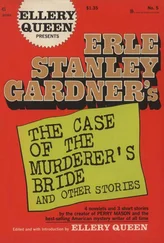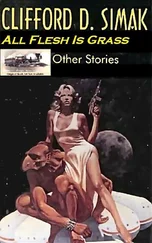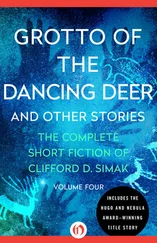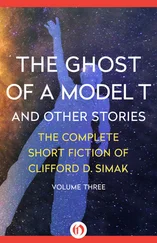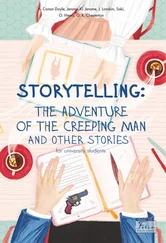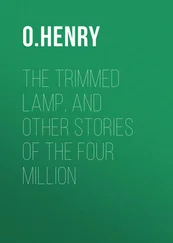The Shipshape Miracle
And Other Stories
The Complete Short Fiction of Clifford D. Simak, Volume Ten
Introduction by David W. Wixon
INTRODUCTION
Little Things: The Way Clifford D. Simak Wrote
“The desk was scarred and battered, unlike the man himself. It was almost as if the desk, in the course of years, might have intervened itself to take the blows aimed at the man behind it.”
—Clifford D. Simak, in “Worlds Without End”
In 1976, when Clifford D. Simak was in the process of retiring from his long career with the Minneapolis Star/Tribune , he told an interviewer that he had “always wanted to be a newspaperman, but realized my creative urges could not be satisfied by writing news.”
The result was that Cliff had two careers—careers that ran in tandem for more than forty years, causing Robert A. Heinlein to marvel, knowing—as he said—that the two types of writing required were vastly different.
Among other things, this meant that Cliff Simak’s newspaper training strongly influenced his fiction. Some would come to criticize his literary style as a “lack of style” (thus betraying a preoccupation with form over substance); but it seems clear that, like the professional newspaperman he was, Simak tried to avoid allowing stylistic flourishes to get in the way of his exposition of the facts of the story—prose, he believed, is not supposed to distract from the plot (well, that was the theory, but once in a while, perhaps unable to stop himself, he would drop in a gem of a line). Robert Silverberg saw this, and described Simak’s work as having a “clear, precise, straightforward narrative style.”
Even before I met him, Clifford D. Simak had become a legendary figure in science fiction, and readers who never had a chance to know him in person are now discovering his work. And I find that in doing so, they become very interested in him—not only in his writing but also in details of his life that might help color in the picture of this beloved Grand Master. So let me tell you a little about how Cliff did his work of writing fiction.
Clifford D. Simak never used a pseudonym, and he engaged in collaborations on only three occasions. In the first of those, he worked with a fellow Twin Cities writer, Carl Jacobi, to produce a story that was first published as “The Street That Wasn’t There” (later reprinted at times as “The Lost Street”). The collaboration does not seem to have been a pleasant experience; Cliff would later say that he and Carl “fought like hell for the weeks it took to write it.” (The two of them tried it a second time, producing a story called “The Cat That Had Nine Lives”; that story also sold, but it was never published because the magazine that bought it— Comet —folded.)
The third of Cliff’s collaborations was with his son, Richard, and together they produced a story called “Unsilent Spring,” which turned out well. Dick (known in the family as “Scott”) was a government chemist, and Cliff would later insist that his contribution to the story was more than just the science, and was essential.
My belief is that Cliff Simak’s aversion to collaboration was closely related to the fact that he simply did not like to talk about a work in progress. “To me,” he said, “writing is intensely private. If I talk to anyone, I feel the story is not entirely mine any more. I lose the magic.”
(In the novel All Flesh Is Grass , one of Cliff’s characters, Nancy, who was a writer herself, would say of that profession: “It’s a thing you don’t talk about—not until you’re well along with it. There are so many things that can go wrong with writing. I don’t want to be one of those pseudo-literary people who are always writing something they never finish, or talking about writing something that they never start.”
(“You have to have a hunger,” Nancy would add, “a different kind of hunger, to finish up a book.”)
Cliff’s way was to spend time thinking about his next story, plotting it out in his head; but once he had it mostly plotted out—when he began to actually put words on paper—it was not unusual for the story to “take off” on him. And he loved it when that happened, when he found himself putting words on the paper without knowing where they were leading him. He found the process incredible; to him, that was the best kind of writing, because it meant he was writing from—well, he called it his gut, or he called it his nerve endings—but I’d say it was from the world underneath the top of his mind.
The process, again, reflected the author’s newspaper training: he began by making notes, often starting by asking himself a question, then answering it, and then beginning to build the stories from pieces he created, trying out alternative beginnings and endings. Sometimes he became so caught up in his creating that he made lists of the names of characters who might be somehow involved—characters who sometimes never even made it into the story.
For the most part, once Cliff had a story worked out in his head, he would begin by using a pencil to compose onto paper. He went to his typewriter only when he thought he had the story worked out to an end in his scrawling longhand, and he used the process of typing it to polish it.
After that, he would—when he could afford it—have someone else retype the finished product for submission. Early in his career (which began around the time his marriage was new), his wife, Kay, would do that retyping—but once he became able to afford to hire a professional typist, Kay, who never liked science fiction, would not get involved.
It’s not that Cliff could not have typed the finished manuscript—he did so, when times required it; but once he had finished a story in his mind, he did not want to go back to it…the urge to rewrite, he knew, would always rise up, and he wanted to resist that: having finished a story, it was a done thing, and he preferred to let it lie.
He made some exceptions to that rule: In his journal entry for February 7, 1957, Cliff, speaking of a story he was then calling “Who Cares for Shadows?” noted that “the end is still to write, but maybe by the time I get to that I’ll know” where “I want to go.” (However that worked, he did finish the story, and sent it to Horace Gold at Galaxy … but after Gold asked for revisions, Cliff complied, even though he often refused to do that for editors. I suspect that this time it was palatable because whatever changes were needed to make the story something Horace wanted, Cliff was able to do it in less than a week (working only in the evenings, after work). Gold accepted the revised story just five days after Cliff sent him the revised version. It would be published later that same year as “Shadow World.”)
When I mentioned above that Cliff took part in only three collaborations, I was purposely passing over a short novel called Empire . I did so because that story was one that Cliff wished he had never worked on.
Late in the 1930s, John W. Campbell, the new editor of Astounding Tales , who had recently talked Cliff into writing him a novel he could serialize—and who had very much liked the story he received, Cosmic Engineers —dug out a short novel he had written at the age of eighteen, called Empire . Cliff would later say that he “gagged” when he read the story, but he worked on it, making it, as he said, “somewhat better,” but “still pretty bad.”
Campbell himself was still not willing to publish the story, and Cliff, as he said, simply “threw it on a shelf.” Years later, when Horace Gold created a new line of science fiction novels that were to be published in digest-size as the “Galaxy Novels” (some very great stories would first be published in that line), he found himself desperately short of material and called Cliff to beg for anything he might be able to get quickly. Feeling a certain obligation to a man who was now publishing a lot of his work, Cliff sent it to him.
Читать дальше

